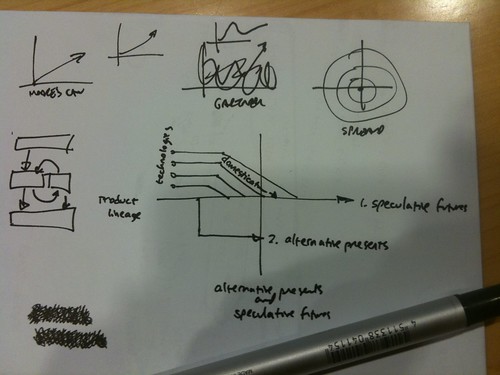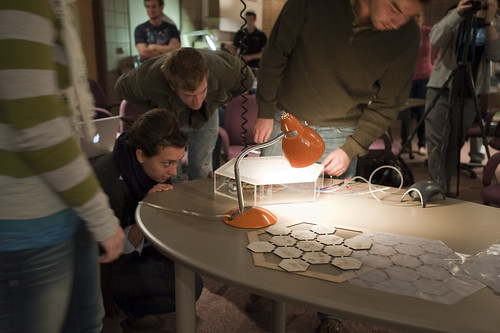I collected some graphs that attempt to represent how the future comes to be while I was preparing for a talk at the University of Michigan’s “Future of Technology” conference, from which I’ve just returned. The graphs are simple ways to represent the path from now into the future and what makes “then” the future and different from “now.” I drew what I had in mind as you see above while I was teasing out something interesting to say for the talk. All along the way I was hoping to be able to show some film clips that I’ve been gathering — film clips of speculative futures and science-based fictions. The talk — it was only 15 minutes exactly — was called 9 Ways of Seeing the Future.
Here they are.
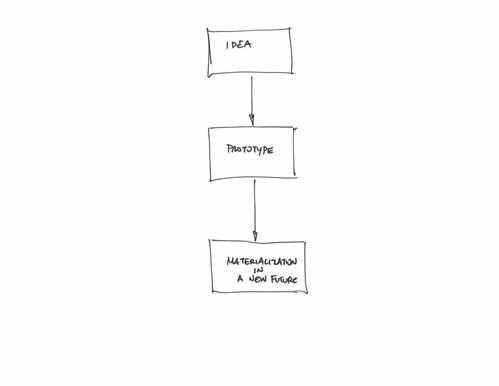
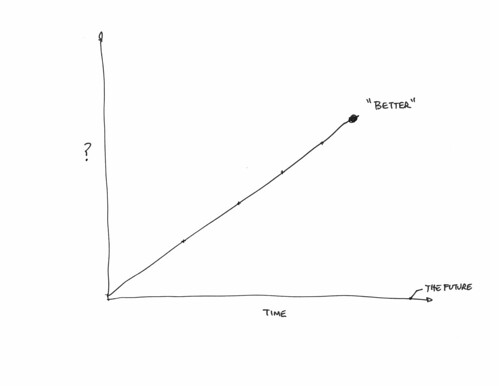
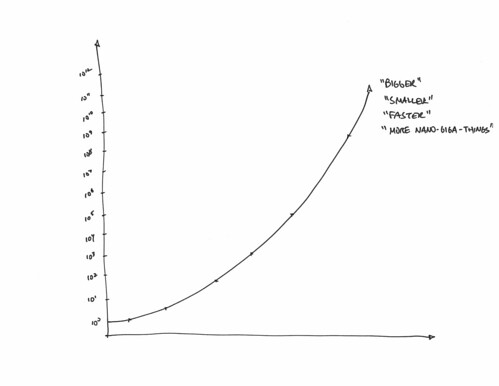
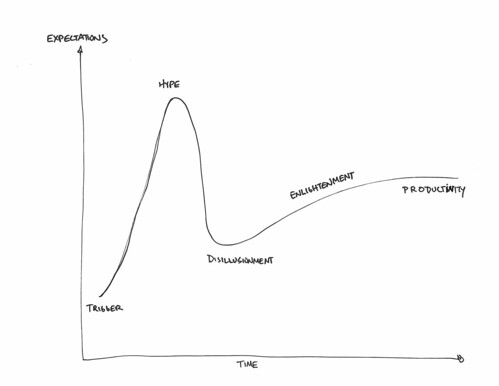

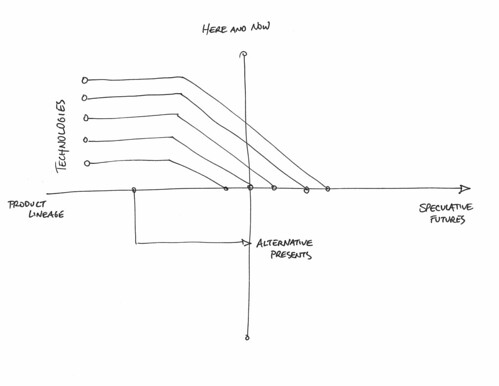
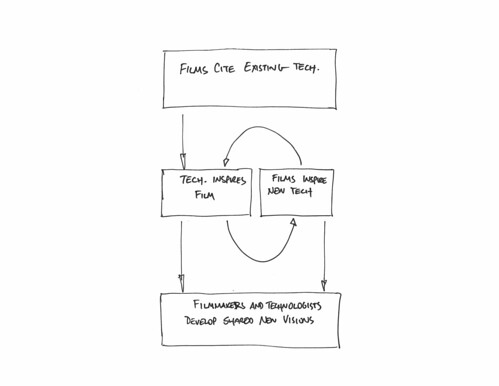
And so then I noticed that these are representations of the future that are rather flat instrumental and parametricized visions of the future and the route to it. And I’m wondering — rather than parametric and numerical and quantified representations of the futures — don’t use graphs — what about stories that avoid the problematic time-goes-from-left-to-right, or that there is only one coordinate for a specific future. An easier way of acknowledging multiple simultaneous futures, and multiple possible futures and that the future is a lived, embodied situation rather than the result of miniaturization or optimization. The future is for us and we live in experiences and stories — not in aspirations for technologies themselves.
Seeing as representations prescribe what we consider possible and even reasonable, having a richer, thicker, more lived representation to help imagine other sorts of futures — and not just bigger/brighter/smaller/lighter ones with new products that we buy to replace the old, perfectly good ones we bought six months ago — we might look toward stories about the future that you can’t graph on a piece of paper.
This is where the Ninth representation comes in — science fiction film. This of course does not exclude other strong representations of the future like science fiction writing, science and technology journalism, and all other kinds of literature I’m sure you’re thinking about. Just happens that right now I’m excited by science fiction film (err..have been for quite some time) and I’m focusing on that.
So, to close out my 15 minute talk and my 1000 word blog post, I shared a short excerpt from Volume 7 of a collection of annotated DVDs the Laboratory’s Media Theory department is creating based on representations of the near future in science fiction film. In this one I look at some of the signs and signals about The Future that are represented in some favorite films.
Why do I blog this? The main point of the talk was, for me, to think through another reason why I see design fiction as a useful idiom for doing design. What I concluded is that choosing how we imagine and represent the future is crucial — and not peripheral — to our ability to solve problems. Graphs are good, but I wanted to establish that there are other ways of productively and fruitfully representing what can be in order to materialize ones ideas. So — science fiction as much more than a distraction from the hassles of figuring out where your idea is on the productization scale, or determining when transistor counts will go up to the next order of magnitude and then never really wondering why that might be useful in a save-the-planet sort of way.
We seem to be pattern recognizers and so the templates and processes and frameworks in which our imaginations live determine to a large extent the possible things we can think of and the measures by which we judge them. ((Which, parenthetically, may be that the best thing one can learn to do is learn see the world through different lenses and from different perspectives — but maybe even more importantly is to know how and when to establish those different perspectives and then help others see — and then think — differently.))
Thanks to everyone at the Taubman College of Architecture and University of Michigan for the invitation and for enduring my hand drawn slides in a sea of luscious, expertly and painstakingly rendered 3D models of parametric architectures.
Continue reading Representations of the Future with Graphs
